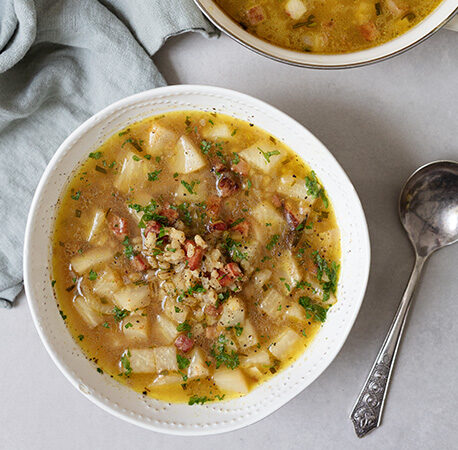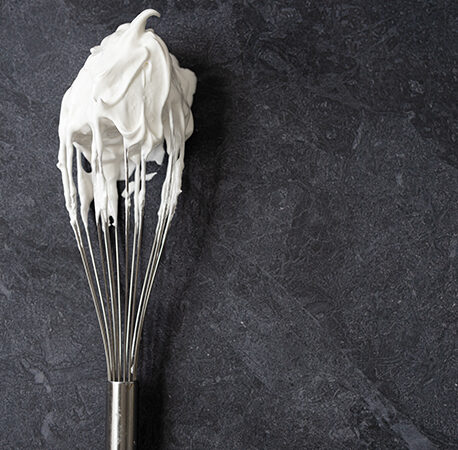Cuts of lamb
Leg
A whole leg is ideal for serving large numbers, and yields plenty of lean, tender meat. It can be divided into two joints (the fillet end has the best flavour).
Shoulder
Roasting joint that is inexpensive because it carries a little more fat. The bone running through the centre makes it a little more difficult to carve. Shoulder benefits from long, slow roasting, and can be boned and rolled, as can the smaller knuckle and fillet ends of the shoulder.
Best end of neck
This has the very best flavour, and is made up of lean meat. It cooks very quickly, and will feed two perfectly. It is also the most expensive cut.
Saddle of lamb
An impressive joint for roasting, but a little difficult to carve. This joint is quite large and expensive.
Loin
A lovely joint for roasting, on or off the bone, because it carries a little more fat than the leg but not as much as the shoulder. A boned loin is ideal for stuffing.
Chump
This is an inexpensive, small boneless joint made of well-flavoured meat with no waste. Ideal for two.
Breast
The most fatty of all the joints, the breast is under-used and underrated. When it has been boned and rolled around a dry, lean, well-flavoured stuffing, it produces a beautifully flavoured, tender and inexpensive roasting joint.
Top 5 tips for cooking lamb
- Go bone-in for flavour; boneless is easier to carve.
Choosing a bone-in or boneless cut of meat is entirely up to you and depends on personal preference. While it’s a little trickier to carve, I love bone-in because it has more flavor. Either way, though, you can season a leg of lamb with your favorite herbs and spices, inside and out.
- There’s no need to marinate it.
One of the roles of a marinade is to help break down fibers in tougher cuts of meat. And since leg of lamb is a naturally tender cut of meat, it doesn’t need it. In fact, marinating this cut could actually make it more tough. Stick with a simple seasoning of herbs, garlic, and mustard, or your favorite spice rub.
- Lamb is good rare to well-done. So know what you like.
Cooks have strong opinions about how well-done their lamb should be. Some prefer it very rare; others want it well-done throughout. Leg of lamb is tender and juicy and will be good along a wide spectrum of doneness. So know what you like and prefer and use this chart to achieve the results you want.
- Let the meat rest after cooking.
Like all other cuts of meat, it’s important to let the roasted leg of lamb rest for about 20 minutes after coming out of the oven. This lets the juices redistribute back into the meat instead of running all over the platter or cutting board.
- Always slice the meat against the grain.
You’ve cooked a beautiful piece of meat, now it’s just as important that you slice it correctly. Lamb should always be sliced against the grain to get the most tender slices.
Roasting times
Roasting Temperature: 160˚C/140˚C fan/gas mark 3
Rare: 52˚C (about 15 minutes per pound)
Medium-Rare: 53˚C to 57˚C (about 20 minutes per pound)
Medium: 58˚C to 60˚C (about 25 minutes per pound)
Well-Done: 68˚C to 74˚C (about 30 minutes per pound)
- summer events
- small business
- gut health
- OATLY
- healthy
- Crudo
- top tips
- All Together Now
- fridge cake
- Events Waterford
- me auld flower
- Events Ireland
- food festival
- news
- dublin
- events Dublin
- dublin festival
- Home-Cooking
- food and drink festival
- online cooking course
- festival line-up
- cooking
- Summer festival
- eco-friendly
- Events
- cosy
- Festivals Ireland
- wine
- Body & Soul
- grapes
- music festival
- south africa






You have to be signed in to comment this post.